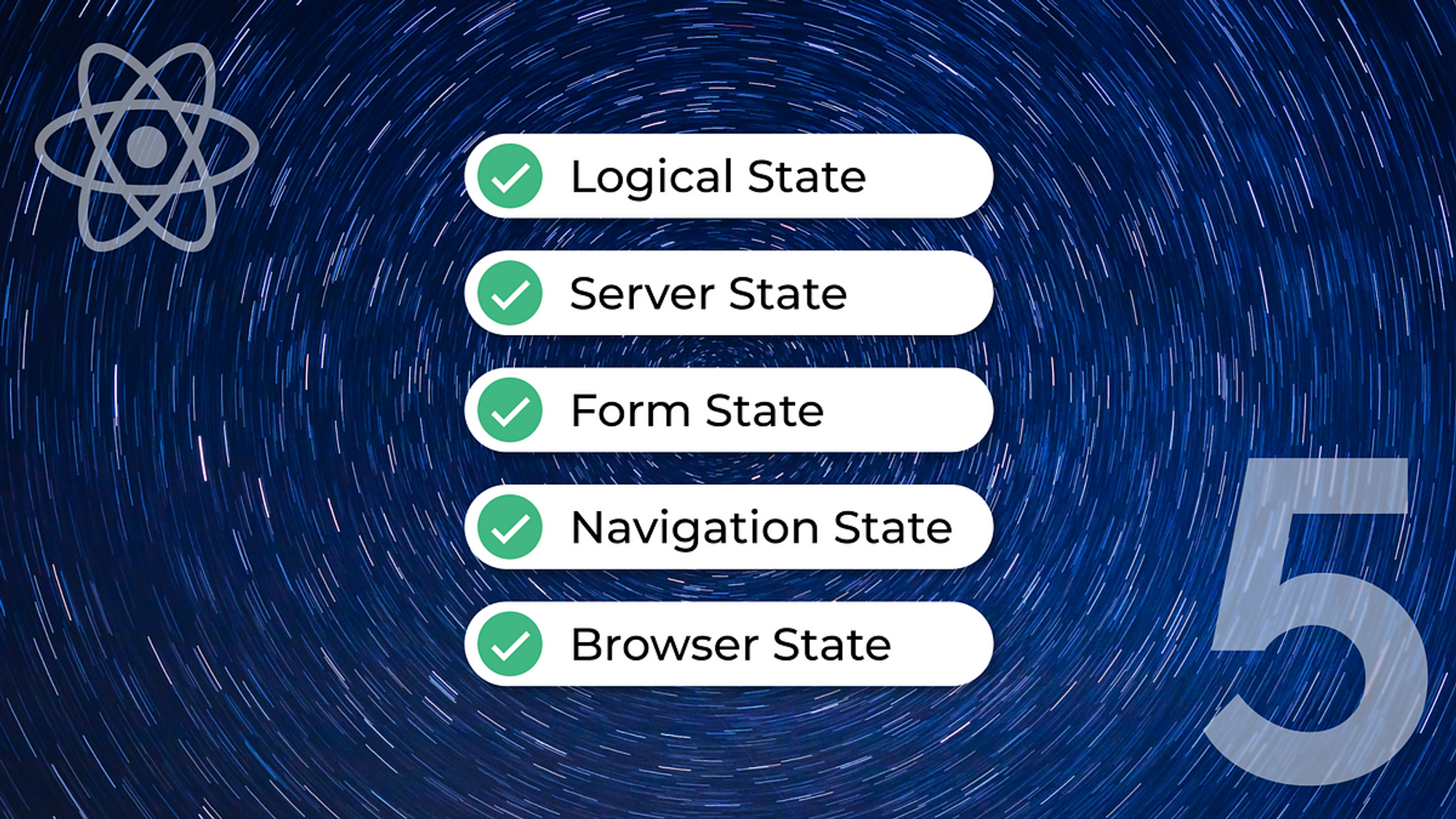Why should you read this article?
- There is a set of criteria when choosing a library for Frontend State Management
- What is state management?
- What does state management care about?
- Have a bunch of reasons to drop Redux
Usually, people who find this post gonna be in one of two groups
- A Frontend engineer is too tired, suffer from
redux😵💫
- Are you just starting out in frontend and want to learn more about state management
If you're in group 1 then... Great, I'm writing this post with 80% of my energy wanting to get rid of
redux 😄. If you belong to group 2, this post will help you have more perspectives on state management, how to act cool with colleaguesSo what the hell is State management?

If you find "what is state management" on Google, there are quite a few definitions, but it can be summarized into two main ideas as follows:
- ☠️ State is the skeleton of the application
- 🏃 State management is to manage that skeleton
It's fuking simple, right?
FAQ
The skeleton of the application?
Is the entire data, the state of the applicate to represent the UI.
You have a state that
isLoading will render the Spinner in UI, which isLoading is stateYou have a state
isLoggedIn to know if the user is logged in or not, which isLoggedIn is stateYou have a DOM tree to render the page profile, broadly speaking it is also the state, it's just that this state is a skeleton with a bit of meat added.
Why state management?
Applications are getting more and more complex → more and more state is available → need state management measures
Also, another reason why there is more and more state is that more and more computation is moving to the frontend
You will not want to search through the bunch of code, when the user logs in, they need to recalculate which state; when users add a post, find a place to update stats again
totalPost,...So state management is needed!
I don't care about state management when I code jQuery?
Yup, it was almost after react started to gain popularity that state management started to appear in mass.
The reason why no one talks about state management in jQuery code (but you still have state and still have to manage it) is that back then the state was simple, states often stuck to UI too (Through properties
data-*) not separate. Apart from that, the job is still simple, there is no need to manage a simple things.Reactjs - A JavaScript library for building user interfaces
React - is defined as a View library, but there is still a lot of arguing, and I admit that it is not going to be a View library anymore, but in the simplest definition, just let it be a View library. If so then it just does its job very well: Render UI
Okay, you guys would say, I can use
setState, useState with React, yes, but react isn't the best at that. The most classic problem is the props drilling.Does state management only applies to React?
No! By definition, 99.999999% of apps have state (0.0000001% is Hello World application), and it will come in handy for all apps that start to get complicated, no matter what libraries or stacks you're using.
- React
- Vuejs
- Flutter
- Backend, Smart Contract
Why do I hate Redux
Basically, I don't really hate it, I just find it overrated
If you have any questions, I am more than happy to reply in the comment section
So which state management to choose?
In this part, I only focus on React, because my current job is focusing on React.
Short: Basically you don't need any state-management library, React + ReactContext + API query library is enough 🤷♂️
People often choose Redux before they need it. “What if our app doesn’t scale without it?” Later, developers frown at the indirection Redux introduced to their code. “Why do I have to touch three files to get a simple feature working?” Why indeed!
Basically, most of your state is only shared in one feature, so it will be encapsulated in a route (eg:
/users, /posts). Therefore, for each route, we only need one ReactContext to handle 80% of cases.Some features will need data users, if so, do we have to query users every time? Most modern query libraries solve this case for you by caching. Try swr or react-query
If things start to get complicated, add libraries like Recoiljs, Jotai. These libraries can be added and easily replaced
useState by Search & Replace.Don't complicate things when it's simple, prepare for it.
Long:
Features

State also has many different types, so there are also many different types of classification, but I found this article is really good at state classification.
Some best practices
- Form state: Do not move it to the global state/store .... whatever. Hey, it's best in just one component. So it
react-hook-formis enough.
- Navigation state:
react-routeris almost the default in every project, better we ignore it. If you want to integrate with the global state, the best sync direction is Navigation state → Global state. This case is often seen when making a search page with a filter
Ok we have 3 guys left
- Logical state
- Server state
- Browser state
That means we need to find a state management library to manage the Logical state, Server state, and Browser state
Easy to add
A good library, for me, DX must be good, I don't want to spend half a day just trying to figure out how to integrate it into my app.
Since state management, in particular, is a complicated thing, so of course, it's complicated to add, but don't make it any more complicated... Redux 😡
However, this part only needs to be done a few times when coding a new project, so this criterion is only slightly important.
Easy to write, easy to understand
Don't force yourself to code a normal use case:
Query API → Render list user in the following step:- Dispatch query action with
keyword
- Write a reducer that takes a query, then dispatches a saga action
- Write action sagas
- Write 2 more reducers for sagas succeed case and fail case
- If successful, merge the received data into the state tree
- Mapping state into UI
This is the job that I find the most de-optimized that most frontend engineers have to do. It's true that "people make it complicated", a good library is a library that must help devs and "enjoy the moment".
In addition, I don't have to spend all day explaining to a Junior that the data will go through these steps, and he replied "it's too confusing 😭", and then I can't hide when it doesn't work.
So easy to write also means easy to understand
Community = Easy to debug/enhance
Community is not natural but is always a criterion that everyone cares about when choosing Library, Framework, ....etc
Community is the part that can cover lots of factors.
Follow the doc not add lib → search google → done.
Can't write → search google → done.
So the power of a library comes from the community that supports it, and Redux is on-top in this criteria
Performance
Often core libraries like this can't, or are very difficult to replace when you realize: "this library is running slow, I can't optimize"
Therefore, Performance is a criterion to consider when this is a long-term project and has a huge future expansion.
Performance can be divided into 2 criteria:
- Load time - often depends on library size, network,...
- Interactive time - usually depends on the "intrinsic" of that library
The state management focuses mainly on data logic, so the part
Interactive time is the most important. Especially in react context, you need to pay attention to how it triggers re-render component when the state is updated
If your project has a small to medium scope, you should not care about this. I think the scope of this type of project should be concerned with the code so that it is fast and easy to understand. Optimized but only 10ms faster is not worth the trade-off.
I had to fix a lot of small and unpredictable bugs because the previous coder focused on optimizing too early!
What type of project is it suitable for?
It is not natural that there are so many state-management libraries, simply for two reasons:
- They are tired of Redux 😫
- Depending on the project with different complexity, there will be suitable tradeoffs → create a library suitable for that tradeoff
This is the most important criterion that I see the difference between a "technology enthusiast" and a "pragmatic technology enthusiast". I met some people who really liked new technology, this new one was so cool but he accidentally forgot, that cool thing is never applied in the project, sometimes it's also an anchor for the team to move forward 🙃
Result
This is the result of my assessment after working on a real project with some of the top libraries in this field, but this is just a personal perspective, do your own research.
Please! Don't use Redux anymore - Redux only handles well Logical state
- If you want to add server state, add redux-saga, or redux-thunk go! - - At the same time, spend an extra day reading the document to see what they are.
- 1 day to put them together, and 1 week to debug why not run 🙂
- Sticking to react? The extra redux-react
- App after a while of coding, it runs slow? Append `reselect`
It is too much to read, too much to code and learn to manage the state. In fact, redux is the most de-optimize factor in the frontend stack

Hopefully, through this post, you will have an overview of state management and how it is used in react. And especially, please, don't use redux if it doesn't fit anymore

